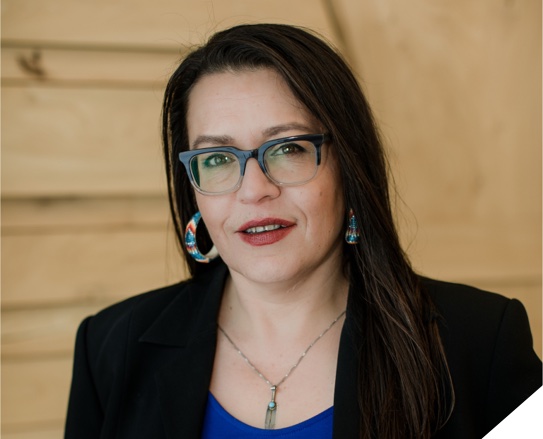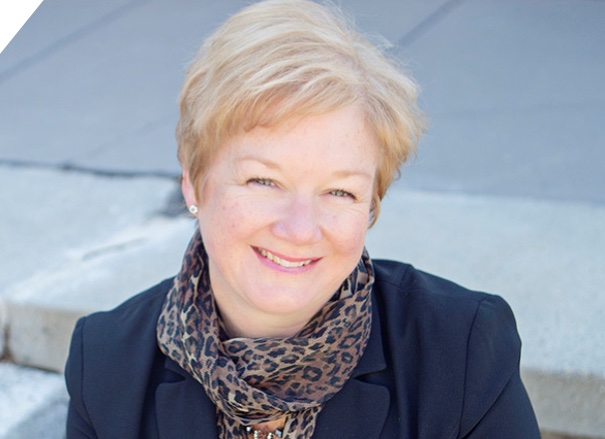- Home
- About Us
- The Team / Contact Us
- Books and Resources
- Privacy Policy
- Nonprofit Employer of Choice Award

 “The Partnership” is Part 2 of a series (Read Part 1: The Shift ) on Wanuskewin, an Indigenous-led organization on a journey to become Saskatchewan’s first UNESCO World Heritage Site by 2025. With a highly successful conventional fundraising campaign complete—and two incredible Indigenous women leaders at the helm—the organization is taking thoughtful steps to build a different kind of fund development strategy. Follow along on the road to UNESCO.
“The Partnership” is Part 2 of a series (Read Part 1: The Shift ) on Wanuskewin, an Indigenous-led organization on a journey to become Saskatchewan’s first UNESCO World Heritage Site by 2025. With a highly successful conventional fundraising campaign complete—and two incredible Indigenous women leaders at the helm—the organization is taking thoughtful steps to build a different kind of fund development strategy. Follow along on the road to UNESCO.
There’s an inherent imbalance of power in conventional fundraising. When one organization, group, or individual holds resources that another needs, it throws off the scales; making nonprofit and charitable organizations subservient to grantors and donors, and clients reliant on fundraising consultants. It can manifest in things like mission-drift and burdensome reporting requirements and deliverables that take away from the core purpose of shared goals.
At Wanuskewin, we’re looking to do things differently. We embrace Indigenous ways of knowing, and are working hard to honour and integrate Indigenous knowledge systems into everything we do, including fundraising. That means tipping the scales of traditional power dynamics—or better yet, tossing the scales altogether—to build reciprocal relationships with staff, consultants, and supporters.
Respect, relationship, and reciprocity
 Reciprocity means many things to many people, but stems from an understanding that we are all connected; all things—and all people—have a unique and important role to play. There’s no hierarchy of relationship, rather an appreciation for the knowledge and gifts each person brings. It’s only when we exchange these gifts through mutuality that a community can thrive.
Reciprocity means many things to many people, but stems from an understanding that we are all connected; all things—and all people—have a unique and important role to play. There’s no hierarchy of relationship, rather an appreciation for the knowledge and gifts each person brings. It’s only when we exchange these gifts through mutuality that a community can thrive.
As we embark on the road to UNESCO, we’re bringing with us a deep respect for the land and each other. Candace, the Fundraising Committee Chair, carries the values and beliefs of Indigenous peoples, and Kathy, the philanthropic advisor, the norms and customs of fund development. We are not fundraising consultant and client, but companions walking side-by-side towards a common goal and learning in process together.
As a result, we’ve learned the importance of relationship and ceremony, keeping community at the centre of our work, and just how far ahead Indigenous approaches to fundraising can be. We’ve also learned Wanuskewin has more to offer its supporters than a gold-plated plaque on the wall (though, we do that too).
Uncovering our value
In talking to grantors and donors, common themes have started to emerge. They believe in the power of Wanuskewin to unite Indigenous and non-Indigenous peoples on the collective journey of truth and reconciliation, and they want to support the organization while taking important first steps themselves.
For some, that means learning how to respectfully and meaningfully engage with Indigenous cultures. So, we’ll offer visits to the park as a form of cultural awareness training for grantors and donors to learn more about Indigenous peoples, and their unique cultures, languages, and experiences. With the Indigenous leadership of Wanuskewin as their guides, they’ll learn about historical and contemporary Indigenous life, land claims and environmental impacts, Indigenous protocols, and more.
For others, the journey of reconciliation means participating in talking circles and ceremonies. So, we’ll invite grantors and donors to join respected community members in-circle to learn about the cultural, historical, and ecological significance of Wanuskewin. They’ll listen as Indigenous leaders, staff, and community members share how deeply meaningful their gift is, both to the institution and to the Northern Plains Peoples.
This is our gift, and it’s one we will exchange proudly as a different kind of donor recognition and stewardship.
Follow along as we dig into the outcomes of our work in Part 3: The Learnings, coming JUNE 16.
Read Part 1: The Shift.
Learn more about Wanuskewin and the UNESCO Ready campaign at wanuskewin.com
Candace Wasacase-Lafferty, Chair of the Fundraising Committee and former Board Chair, Wansukewin Heritage Park and Senior Director of the Gordon Oakes Red Bear Student Centre at the University of Saskatchewan.
Candace is a Saulteaux and Cree citizen of the Kahkewistahaw First Nation, and a graduate of the University of Saskatchewan. Prior to her 20-year career with USask, Candace worked within her own communities and held positions with the Federation of Sovereign Indigenous Nations, The Saskatoon Tribal Council, and the Saskatchewan Indian Institute of Technologies. Candace began working at the University in 2001 and has held in various roles in human resources, community relations, student services, fundraising, partnership development and lead in the realization of the Gordon Oakes Red Bear Student Centre. In 2019, she began working with the Johnson Shoyama Graduate School of Public Policy in partnership with Harvard University to bring the Honouring Nations program to Canada. Candace is committed to promoting and living Indigenous values and culture within the university and beyond.
Kathy Arney, President and Founder, KEA Canada Ltd., CAGP Board and Education Committee member.
Kathy has spent her career growing organizational capacity, improving results and enabling people to reach their full potential. Kathy’s business degree and CPA designation combined with her executive background and two decades of working in philanthropy support her work helping clients strengthen their organizations and improve their impact. Through KEA Canada, she provides services in a variety of areas including resource development, capacity-building, strategic planning, board development, government relations, campaign planning and management, coaching and interim leadership. Kathy held senior positions at Queen’s University, UBC, Carleton University, University of Saskatchewan and Banff Centre and has consulted with other leading universities, arts organizations, community and social service organizations and First Nations and Metis organizations.